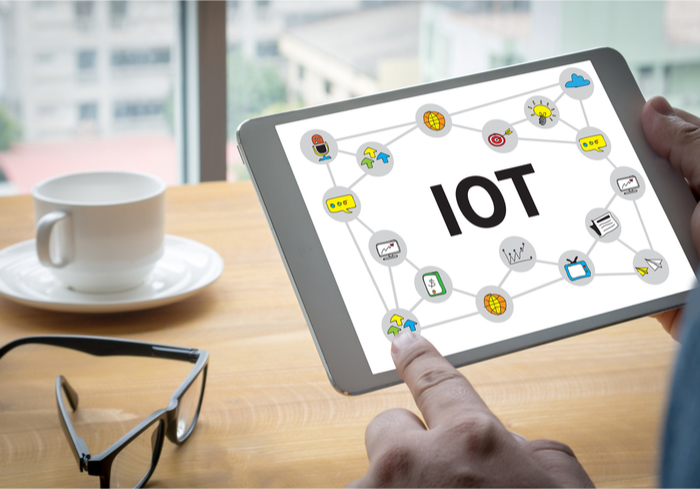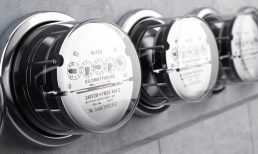“With the ubiquity of smartphones, people expect to have access to data and be notified on these devices,” said Ray Almgren, chief marketing officer at Swift Sensors. Consumer products like Fitbit, Square and Nest all use similar wireless IoT technology to inform users in real time, and many people have come to expect that sort of ease and immediacy.
In other applications, Alibaba’s Tmall Genie voice assistant will be implemented in new Volvo, Daimler and Audi cars. And Mahanagar Gas Limited and Tata Communications are teaming up to bring 5,000 smart meters to Mumbai. Regardless of the use case, the use of IoT technology is booming. Here’s how:
The global IoT market is expected to have a compound annual growth rate (CAGR) of nearly 27 percent from 2018 to 2024. Overall, the market is expected to grow to $6.5 trillion in 2024. The growth is driven by factors such as the falling cost of smart sensors and increased demand for automated technologies. A 2017 report said that worldwide spending on the IoT is set to reach $772.5 billion in 2018, almost 15 percent increase over the $674 billion that will be spent in 2017. The update to the International Data Corporation (IDC) Worldwide Semiannual Internet of Things Spending Guide forecasts that worldwide IoT spending will sustain a CAGR of more than 14 percent through the 2017-2021 forecast period, surpassing the $1 trillion mark in 2020 and reaching $1.1 trillion in 2021.
More than 430 million smart home devices were shipped worldwide in 2017. Google Home is making some inroads against Amazon’s Echo devices, powered by its voice-activated personal assistant, Alexa. According to Search Engine Land, Consumer Intelligence Research Partners (CIRP) said that Google Home represented 40 percent of the units sold during the holiday selling period in the U.S. According to the report, CIRP found that Google Home now has a 31-percent market share, compared to 69 percent for Amazon’s Echo devices. During the fourth quarter of 2017 — which includes the holiday shopping season — the research firm found that the market increased by 18 million units, coming in just shy of 45 million. The survey shows that Google Home is gaining on Amazon Alexa, and could close in even more in the coming months. Amazon does have a big advantage over Google in terms of distribution and brand recognition, as it was early to the market.
The IoT fleet management market is expected to be worth nearly $17 billion by 2025. According to data released last year, IoT technology is taking off in the fleet space, with IoT in fleet expected to see a 21 percent CAGR by 2021, hitting a market value of an impressive $8.28 billion. Though, at first glance, IoT technology appears to only impact how fleet managers gain visibility into the physical location and state of fleet vehicles, the financial impact of IoT can be significant. According to analysts, IoT technology can help businesses reduce maintenance costs, for instance. Furthermore, virtual fuel card technologies are also gaining traction and landing on streamlined IoT platforms, offering fleet managers a single view of their fleets that can assess vehicle maintenance, driver performance and spend management and analytics.
Seventy percent of surveyed service providers are focusing on cellular IoT. Verizon, for example, has ThingSpace — its new IoT platform developed to provide improved connectivity to devices at reduced costs. According to The Wall Street Journal, Mike Lanman, senior vice president of enterprise and IoT products at Verizon’s San Francisco Innovation Center, said that the new platform will enable devices to connect to its 4G LTE network at reduced access charges and help drive down costs associated with developing IoT-enabled devices. Unlike the demands of a mobile network, Verizon’s IoT platform has been designed to handle a large number of connections that require less data transfer.
The smart home industry is projected to be worth $53 billion by 2020. LG, the South Korean tech giant, is leading the charge when it comes to smart, connected devices and appliances for the home. The modern consumer’s most precious commodity is time, and LG has seen the light: Consumers will pay good money to anyone who can give even a small piece of that commodity back to them. Knock twice to look inside LG’s futuristic fridge without letting out any of the cold air inside. This LG appliance features a door that is actually a window/screen so — though it appears to be made of regular, opaque stainless steel at first glance — the smart door turns translucent when users knock on it. The capability saves energy by keeping cold air inside while you work on your grocery list. The fridge is even smart enough to know which items have run out or expired and need to be restocked. Users can also bring up recipes right on the door.
IoT solutions, such as Swift Systems, can be cost-effective. Getting started with the system costs less than $1,000 in hardware, and continuous cloud monitoring runs around $50 per month. That’s about one-tenth of the cost of traditional solutions, Almgren said, and the expense is quickly recouped.
What will IoT technology come to next? Only time will tell.




